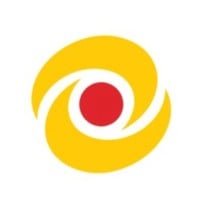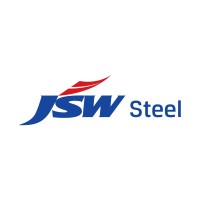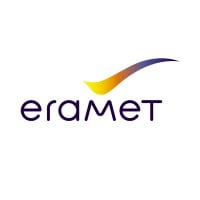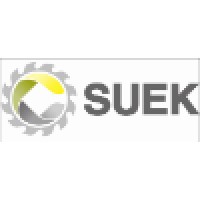Company Cyber Security Posture
NANA
NA Company Details
NA
NA
NA
NA
NA
NA
Scan still pending
NA
NA
Between 200 and 800
This score is AI-generated and less favored by cyber insurers, who prefer the TPRM score.
 NA Global Score
NA Global Score.png)

Company Scoring based on AI Models
| Model Name | Date | Description | Current Score Difference | Score |
|---|---|---|---|---|
| AVERAGE-Industry | 03-12-2025 | This score represents the average cybersecurity rating of companies already scanned within the same industry. It provides a benchmark to compare an individual company's security posture against its industry peers. | N/A | Between 200 and 800 |
Company Cyber Security News & History
| Entity | Type | Severity | Impact | Seen | Url ID | Details | View |
|---|
Company Subsidiaries

NA
Access Data Using Our API

Get company history
.png)
NA Cyber Security News
The books shaping today’s cybersecurity leaders
From strategy and psychology to history and decision-making, these are the books CISOs recommend to sharpen your thinking, influence your ...
The role of the cybersecurity PM in incident-driven development
From PowerShell abuse to USB data theft, modern threats hit fast—and hard.vSee how security-minded PMs are responding with real-time ...
AI-Driven Cybersecurity Boom Makes These 3 Stocks Worth Buying
An updated edition of the June 9, 2025 article. Cybersecurity has shifted from being just an IT task to a major business priority.
Introducing the smarter, more sophisticated Malwarebytes Trusted Advisor, your cybersecurity personal assistant
Malwarebytes Trusted Advisor has had an update, and it's now sharper, smarter, and more helpful than ever.
Trump AI plan calls for cybersecurity assessments, threat info-sharing
The U.S. government will expand information sharing, cyber risk evaluations and guidance to the private sector to address the cybersecurity ...
USF Bellini College of Artificial Intelligence, Cybersecurity and Computing hosts inaugural summer research program ahead of fall launch
From training robots to integrating artificial intelligence into hardware systems, the USF Bellini College of Artificial Intelligence, ...
Bad Break In CIBR Led To Our Exit And The Skip Of A New Entry
A bad break in cybersecurity stocks led to our exit, even before knowing the reason for it. It also led to us skipping the next setup.
Cyber Career Opps: Weighing Certifications vs. Degrees
Longtime CISO Melina Scotto joins Dark Reading to discuss career advice gleaned from her 30 years in the cyber industry.
Google, Palo Alto, and the Billion-Dollar Cybersecurity Wars
Palo Alto Networks is reportedly in talks to acquire SentinelOne in a deal worth up to ₹83400 crore, reshaping the AI cybersecurity ...

NA Similar Companies

Norsk Hydro
Hydro is a leading industrial company that builds businesses and partnerships for a more sustainable future. We develop industries that matter to people and society. Since 1905, Hydro has turned natural resources into valuable products for people and businesses, creating a safe and secure workplace

Zijin Mining Group
Zijin Mining Group (紫金矿业集团) is an international mining company that currently runs various subsidiaries in 12 countries in Asia, Africa, Europe, South America, and Oceania. It is ranked No. 77 on Fortune's Top 500 Chinese Enterprises List in 2020 and No.778 on Forbes' Top 2000 Global Enterprises Lis

JSW Steel
Over the last 35 years, we have partnered the country in its journey to self-reliance, by embracing sustainability, adopting cutting-edge technology and having innovation and R&D initiatives at the heart of our culture. From humble beginnings with a single plant in 1982, we are now India's leading m

Vale
We are a global mining company producing iron ore, pellets, and nickel, and we are committed to becoming one of the safest, most trustworthy mining company in the world. With a workforce of 120,000 employees, we work every day to transform natural resources into prosperity and sustainable developmen

Eramet
Committed to sustainable metals. Eramet transforme les ressources minérales de la Terre pour apporter des solutions durables et responsables à la croissance de l’industrie et aux défis de la transition énergétique Ses collaborateurs s’y engagent par leur démarche citoyenne et contributive

SUEK
A major producer of thermal coal: no. 1 in Russia. In 2008, the production volume was 96.2 million tons. One of the main coal exporters: no. 1 in Russia. One of the key private investors in the power generation sector. One of the major job providers in the country: about 46,000 employees in 10 reg

Frequently Asked Questions
Explore insights on cybersecurity incidents, risk posture, and Rankiteo's assessments.
NA CyberSecurity History Information
How many cyber incidents has NA faced?
Total Incidents: According to Rankiteo, NA has faced 0 incidents in the past.
What types of cybersecurity incidents have occurred at NA?
Incident Types: The types of cybersecurity incidents that have occurred include .
Additional Questions
What Do We Measure?
















Every week, Rankiteo analyzes billions of signals to give organizations a sharper, faster view of emerging risks. With deeper, more actionable intelligence at their fingertips, security teams can outpace threat actors, respond instantly to Zero-Day attacks, and dramatically shrink their risk exposure window.
These are some of the factors we use to calculate the overall score:
Identify exposed access points, detect misconfigured SSL certificates, and uncover vulnerabilities across the network infrastructure.
Gain visibility into the software components used within an organization to detect vulnerabilities, manage risk, and ensure supply chain security.
Monitor and manage all IT assets and their configurations to ensure accurate, real-time visibility across the company's technology environment.
Leverage real-time insights on active threats, malware campaigns, and emerging vulnerabilities to proactively defend against evolving cyberattacks.




